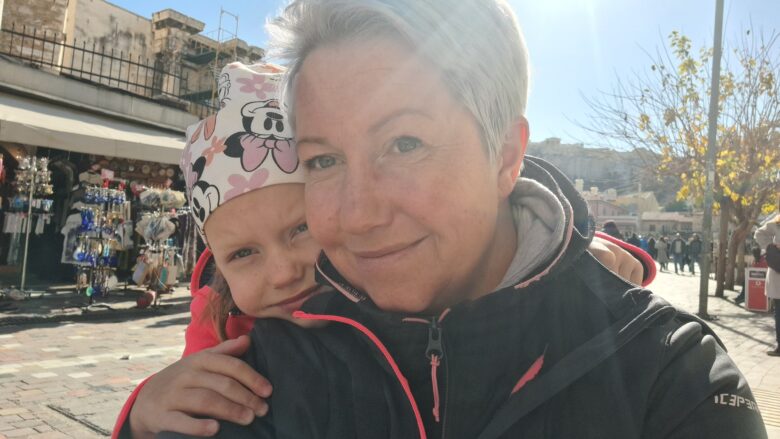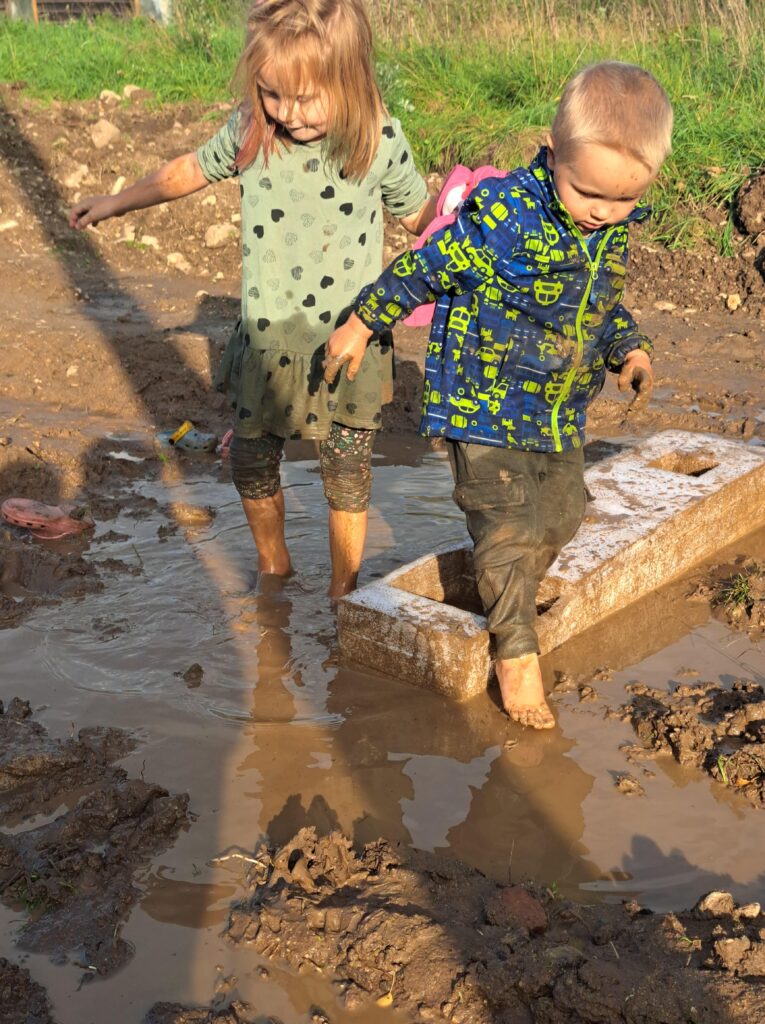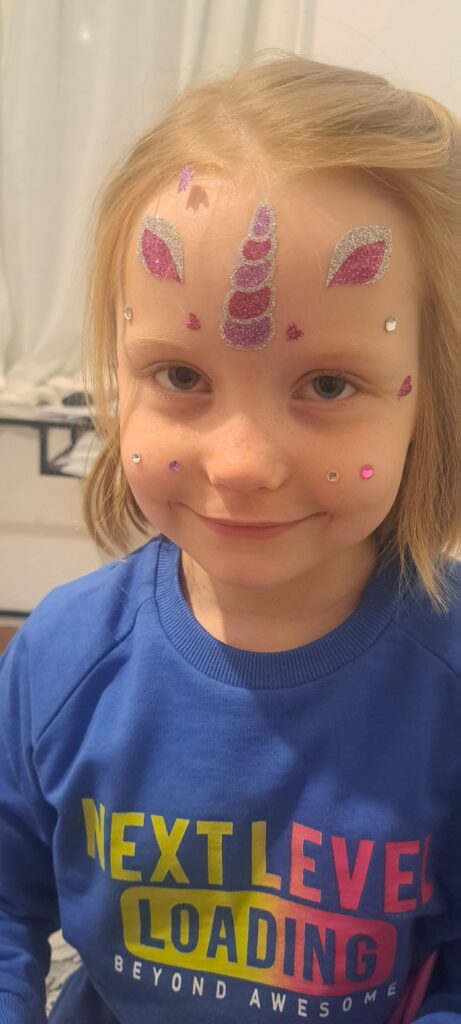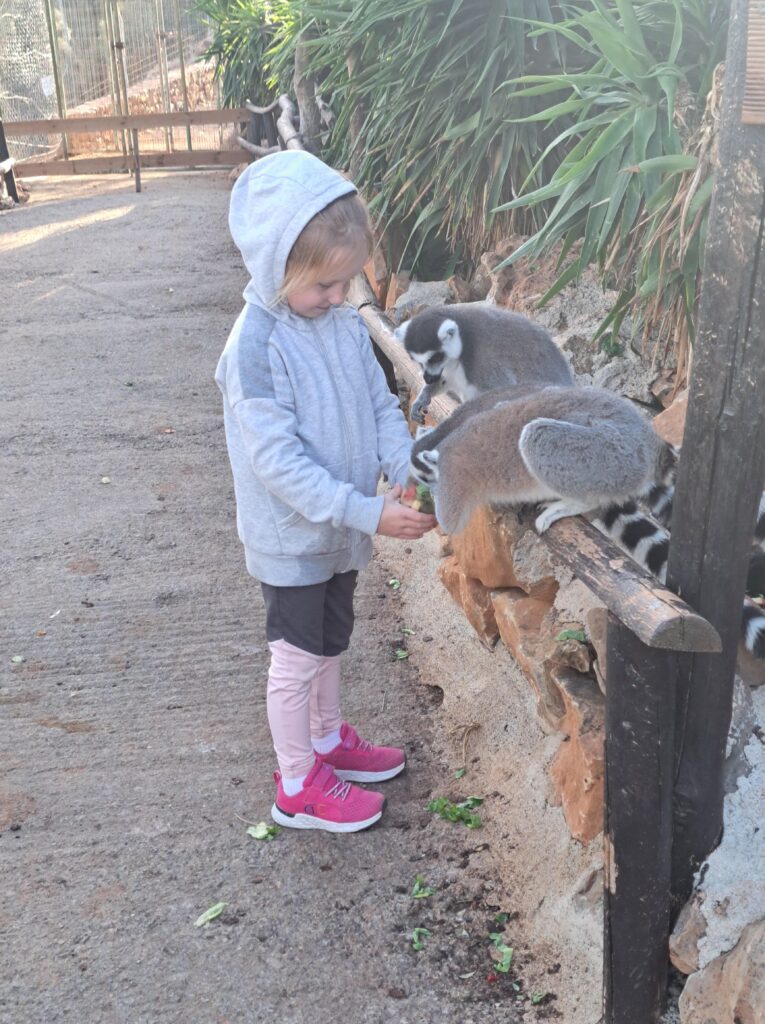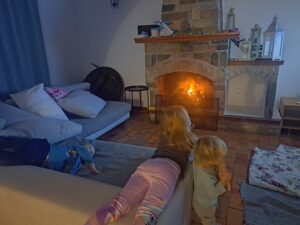I am putting this story in writing to share it with our doctor from the beginning of Indy’s story, and at the same time, I am sharing it with you all: perhaps someone will have a thought, a connection, an experience, and maybe you can help contribute to our thoughts.
To start from the beginning, we need to go back to New Year’s Eve of 2022-2023 when we embarked on our last trip to Greece. Up until then, our children had all been quite healthy, but at the beginning of the last trip, all three kids were hit with a high fever. Each of them had a fever at times exceeding forty degrees Celsius for about 5-6 days. It started on the way to Greece, so we spent the first week of the last trip in Poland, treating and taking care of the children.
After that, we were relatively healthy until we arrived in Crete, where the kids were hit by a severe episode of diarrhea that lasted almost a week. It was without a fever, and we recovered from it quite well.
One and a half months later, in early March, as we were leaving the island of Crete, a powerful sandstorm occurred. We crossed the sea, and waking up on the mainland the next morning, our van was covered in thick orange sand. A couple of days later, we were all sick again. The children had an extremely high fever again, around 40 degrees Celsius, but fortunately only for two days. Massive vomiting and diarrhea lasted for about three days.
Again and again on the heels!
When we met friends from the island of Crete at motocross races, they told us that they had also experienced that sandstorm. Our friend’s husband had even ended up in the hospital due to tremendous weakness, vomiting, and diarrhea. The local doctor had suggested that the sandstorm might have introduced some bacteria causing these symptoms.
Continuing our journey to Halkidiki in Northern Greece, we rented an apartment for ten days. Upon starting the air heat pump there, it released a burst of something unpleasant – probably dirt and mold. The specific smell of mold pervaded the entire living space, and we discovered a significant amount of mold under the beds.
After our last episode of illness, we all felt quite unwell for a very long time. Weakness, runny noses, cough, and a general sense of malaise lingered. It seemed like we couldn’t fully recover from the illness, and staying in the apartment exacerbated our weakness. As things didn’t improve, we decided it might be better to turn our van toward Estonia. Perhaps a change of environment would help us recover from this poor state of well-being. And it did. As soon as we were outside that apartment, everyone’s well-being improved significantly.
While in Greece, the children were very happy and cheerful. Indy especially loved skipping around and developed a new habit of testing limits, constantly jumping from heights.
She is quite temperamental; surely, anyone familiar with a situation where a child, in a stubborness situation, stomps their feet, would relate. Indy sometimes does it to the extreme, sitting on the floor and banging her heels against the ground. She has done it a lot, and despite our comments as parents, we haven’t been able to control her behavior.
In our farmhouse in Estonia, the children’s favorite attraction is, of course, the trampoline. That spring, the kids discovered how exciting it would be to jump on the trampoline when it’s covered with the little sea ball balls. As usual, children play, and at some point, we discovered their little trick: they had carried their seaball balls onto the trampoline. I understand – it’s undoubtedly fun to jump in a heap of small balls! However, this led to twisted ankle joints and some pretty bad experiences. At times, the children didn’t dare to inform us about their injuries because they knew their actions were forbidden. And who comes down from a trampoline along the ladder? Certainly not by walking but by jumping and landing with a bang on the heels, not the toes.
All of this is so familiar because even in my childhood, when I was smaller, I tended to walk somehow more on my heels, and the initial jumps also landed on my heels. Indy walks exactly the same way: roughly bumping on the heels.
Strange anomalies
Around May, when we were able to start working on the motocross track, the weather was already warm, but the water was still very cold. Icy would probably be a better word. And when a child ends up by the water, even if they have shoes on, there’s always a strong desire to splash around and play at the edge of the pond. One day, Indy’s feet definitely got quite cold there.
By the end of the first week of June, we suddenly noticed that both of Indy’s ankles were somehow swollen and inflamed. We consulted a doctor who examined her legs bu her eyes and suggested that it might be juvenile arthritis. You already know that part. Nothing else was even considered, not even other situations or diagnoses, starting with trauma or exposure to cold at that moment.
Indy had her first tick when she was just over a year old. Last summer, there were somehow an unusually large number of ticks, and they managed to bite all of us several times. However, Indy’s blood does not show Lyme disease.
After we discovered that Indy’s feet were swollen, her condition deteriorated quite rapidly. In the morning, she would rise cheerfully: do some activities, and walk around, but day by day, she would tire more quickly from being on her feet and request rest breaks. She would do a little, then sit again. She complained of pain during movement, and a bit of rest would make her stand on her feet again for a while.
On the worst days, Indy would already be on all fours at home in the evening. The day’s activities made her legs so sore by evening that she couldn’t even stand on her feet anymore; she even went to the toilet on all fours or asked to be carried. It was a pretty terrible situation. Nevertheless, her mood was good, and if we tried to spare her from moving, she would still rush to play with her siblings. You can’t confine a five-year-old indoors when the sun is shining.
At night, the child has never complained of pain or woken up. She slept and sleeps normally. There is no stiffness in her legs in the morning, but fatigue and pain develop in the evenings after exertion. The legs were simply swollen, and we didn’t notice any redness. If anything, the lower outer edges of the soles of her feet were occasionally slightly bluish.

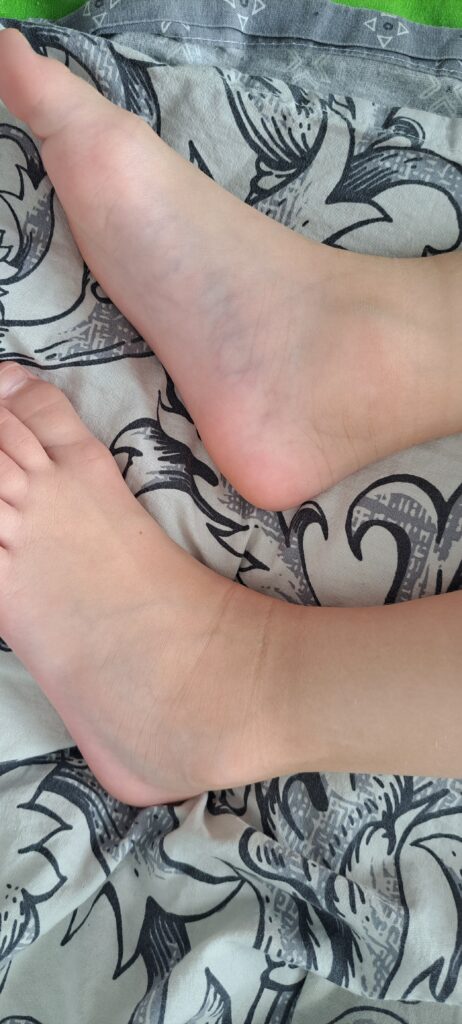
If I remember correctly, July was the toughest for us. She started walking more on one leg, placing more weight on the outer edge of the foot, and constantly keeping her big toe up. Around August, she stopped moving on all fours, and the situation somehow improved. In June, we also used ibuprofen as recommended by the doctor, but it brought us no change except for tremendous abdominal pain.
However, there were strange episodes in between: about three or four times, the child suddenly complained about something like ants on her thighs. There was no pain, but the child pointed to her thighs, indicating that something tickled. It occurred suddenly, either during play or sitting, and disappeared just as suddenly.
Another strange anomaly: we had just been to the dentist for a checkup, where everything was fine. Indy jumped from her bunk bed to our bed, and after the jump, she suddenly complained of tremendous toothache in the upper row near the back tooth on the right side. The child cried hysterically, screaming ai-ai-ai. We could only think to quickly give her ibuprofen. She swallowed half a tablet, and by the time it went down the esophagus, the crying and pain were wiped away with a handful and forgotten. It was truly strange.
The third strange thing is that the child’s feet quickly swell in cold water and retract under a warm shower in the room.
One more observation – going uphill, the child can walk better; coming down from a hill or stairs causes difficulties.
At some point while in Crete, we noticed that while other children became more tan in the sun, Indy was still pale even after a long day outdoors. We started taking additional vitamin D, and now Indy’s cheeks turn red again in the sun.

Can’t stand upright for long
Our children also have this peculiar habit that when a tantrum occurs, they start supporting their foot on the big toe and twist it as if under the sole while standing. When Indy had done this enough times, at some point, her big toe swelled, and it has been swollen ever since. She still twists it in the same way as much as she can.
Once in the summer, during a ball game, I saw myself how one of Indy’s fingers next to the little finger turned upside down. Naturally, it swelled, and it is still swollen. She has actually received the same injury to that finger several times. For some reason, as soon as Indy hurts a joint, it swells, but the swelling does not subside. As if the body cannot cope with self-healing.
Since around September, the situation has been stable. Indy’s feet were still swollen, and the range of motion in her foot was relatively small; the foot didn’t move much up and down. In August, tendon sheath inflammation was suspected in the ultrasound.
Although Indy no longer moved on all fours and the situation had slightly improved, walking still caused her so much trouble that, for example, in the grocery store, she couldn’t make it through the entire shopping trip and asked to be carried from about halfway.
Antibiotics changed the situation
In December, while in Crete, we underwent our first week-long course of antibiotics. A tremendous change occurred as early as the third day of antibiotics: Indy’s swelling decreased, and the mobility of her feet increased significantly compared to before. Now she could complete a whole shopping trip in a way that, as we were about to leave the store, she and her brother could still run around. It was astonishing for us because the change was truly significant. Indy could walk more normally again, no longer leaning on the outer side of her foot, and could stand on her feet for a long time without causing her pain. Unfortunately, we were asked to discontinue the antibiotic course because the blood tests, which eventually arrived, did not show signs of Lyme disease.
Now we are taking naproxen, which should bring results if it is juvenile arthritis. However, it did not bring any positive changes to Indy’s legs during the medication. Instead, the child started complaining more about pain already on the second day of naproxen. Now, about three days after finishing taking the medication, Indy’s legs started hurting even more, and this medicine brought us back to a situation where the child cannot be on her feet for long. Indy indicates several times a day that specifically her left leg causes pain from the outer and inner edges of the arch. Additionally, we noticed that our daughter has suddenly developed many bruises.
Both of us have iron deficiency. Hemoglobin levels are sometimes below normal, and ferritin is below normal for me, while Indy is borderline. Iron deficiency has been an ongoing issue for us.
In the latest ultrasound, it was observed that there is excess fluid around Indy’s tendons; there is also too much fluid between the joints, and the joint fluid sac protrudes between the joints, forming a cyst under Indy’s ankle with a diameter of about a centimeter. The MRI revealed that the bone marrow is swollen, and the fluid membrane has thickened.
Blood tests do not show overall inflammation: sedimentation rate and inflammation indicators are within normal limits. However, in June, the sedimentation rate had slightly increased, which had spontaneously decreased in July. Nothing conclusive has been found from urine tests, but it is visible to the naked eye that there have been crystals in the urine.
We have been tested for various specific diseases – even an HIV test was performed. Tuberculosis was negative. Different proteins specific to Sjögren’s syndrome, lupus, and others were negative.
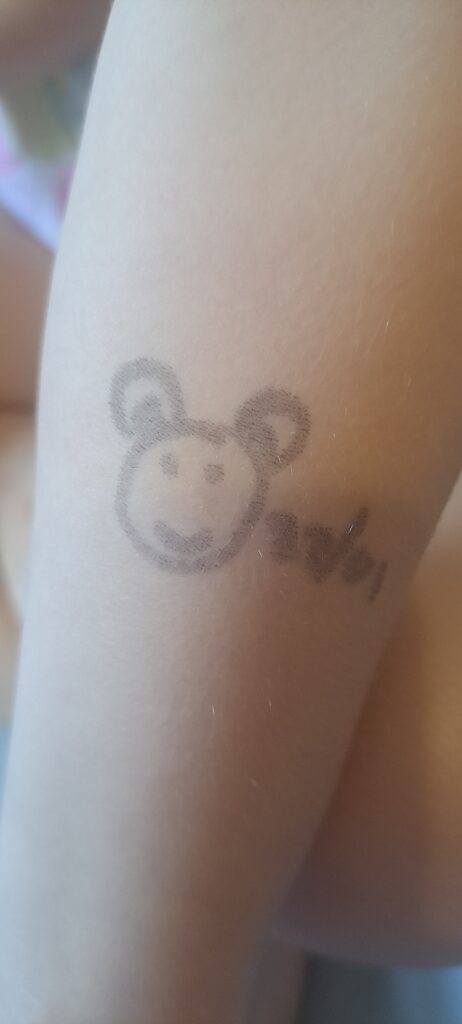
In Crete, we have been thoroughly examined.
However, Indy has a strongly positive ANA indicator in her blood, which stands for antinuclear antibodies. Anti-ds-DNA was slightly positive, rheumatoid factor was negative, and anti-CCP was negative. This ANA test is a peculiar thing mentioned in medical articles as somewhat non-specific. It can provide information, but at the same time, it is not sufficient evidence. It can be positive in completely healthy individuals, and its positivity can also be influenced by the presence of certain viruses in the body. For example, Indy’s cytomegalovirus indicator is almost in the gray area, but local doctors haven’t explained it to me in detail yet.
X-rays revealed no bone changes.
From psychosomatic symptoms, it should be noted that Indy is tremendously afraid of being away from her parents. As mentioned before, Indy knew before us that there is a sister coming and accurately predicted the exact date when her sister would arrive. Overall, Indy often tells us stories about her so-called previous parents who were killed when she was still a little child. Soldiers were involved in this situation, and she escaped. The discussion on this topic could continue longer, but the point is that Indy constantly expresses to us how happy she is to have new parents. She cannot distance herself from us at all, is very clingy, climbs into mom’s lap in the middle of the night, and somehow fears that we might disappear.
At the Crete University Hospital, our processes are still ongoing. We are also assisted by an orthopedic doctor, whom I personally visited with my casted leg, and we are extremely pleased that we ended up with him. He seems to be a very wise man with a big heart.
However, with many minds come many opinions, and I believe that the readers here have a wealth of experiences. Help us think about what we might be dealing with. What else to check? What lessons are we learning here? Share your experiences on similar topics. Our thoughts are going to run out soon.

